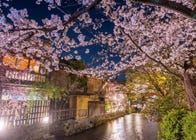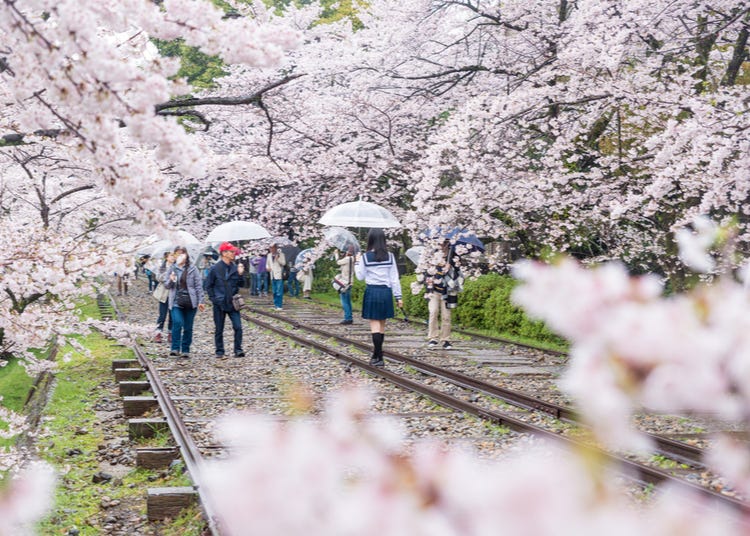
One of the prettiest places to see cherry blossoms is Kyoto! Many of the famous Kyoto cherry blossom spots have weeping cherry trees and double-flowered cherry trees, making for breathtaking photos. Tourists are treated to the city's unique, luxurious annual blossom viewing when the trees reach full bloom in early April.
Here are ten locations carefully selected from among Kyoto's many famous cherry blossom sites, along with information on the best time for viewing and associated festivals for your reference when visiting the ancient capital.
Main image: Travelpixs / Shutterstock.com
- Table of Contents
-
- 1. Yodogawa Kasen Park: A masterpiece of riverside cherry blossom tunnels
- 2. Ninnaji Temple: Late-blooming eye-level Omurozakura is a must-see
- 3. Maruyama Park: Experience "Gion-no-Yozakura" - legendary Kyoto cherry blossoms!
- 4. Daigoji Temple: Famous for its "Daigo of Flowers" blossoms
- 5. Arashiyama: Magnificent view of Kyoto cherry blossoms from Togetsukyo Bridge
- 6. Heian Jingu Shrine: Fascinating Yaebeni Shidarezakura
- 7. Kiyomizu Temple: See the sea of cherry blossom "clouds" from Kiyomizu Stage
- 8. Kyoto Botanical Gardens: A special place where you can see 180 kinds of cherry blossoms
- 9. Keage Incline: Look at the blossoms as you walk the rails
- 10. The Philosopher's Path: Walking path along a canal with about 400 cherry blossom trees
1. Yodogawa Kasen Park: A masterpiece of riverside cherry blossom tunnels
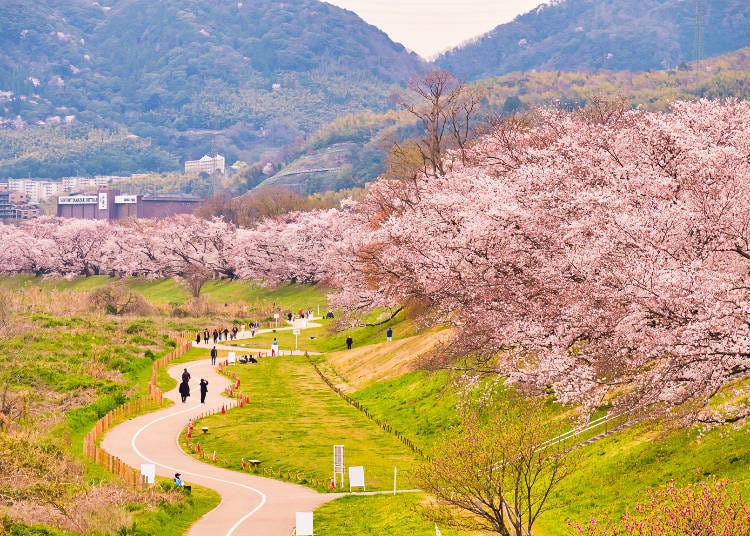
Yodogawa Kasen Park is a national park covering a vast river area that straddles Kyoto and Osaka prefectures. The park's Sewaritei area in Yawata City is located on a 1.4 kilometer-long bank between the Uji and Kizu rivers, where they converge with the Katsura River to form the Yodo River.
Around 220 Yoshino cherry trees line the park's footpaths, making it a very popular Kyoto cherry blossom viewing destination.
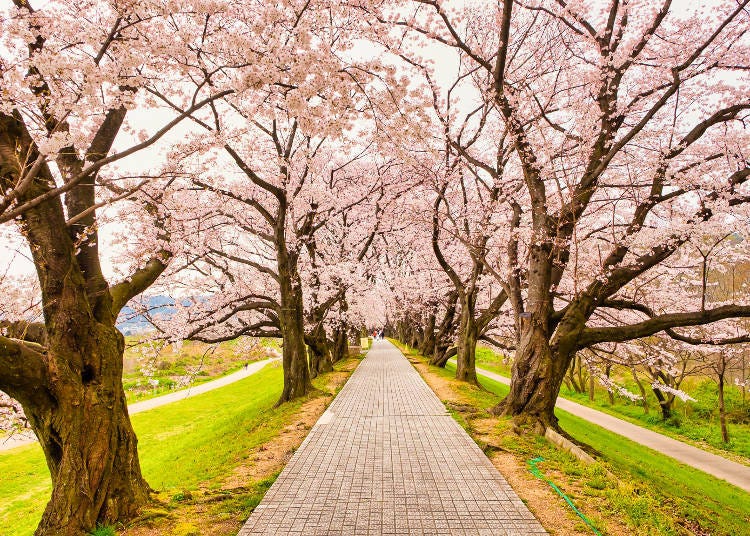
Located on a hill and situated about 25 meters above ground, the Sakura Deaikan observation tower overlooks the cherry blossom trees and the Uji and Kizu rivers.
On the outskirts of Kyoto, the park is a popular place to enjoy the beautiful river scenery, and its Sewaritei Sakura Festival draws as many as 450,000 people annually. The festival features plenty of stands selling beer and sake, and it's a vivacious event.
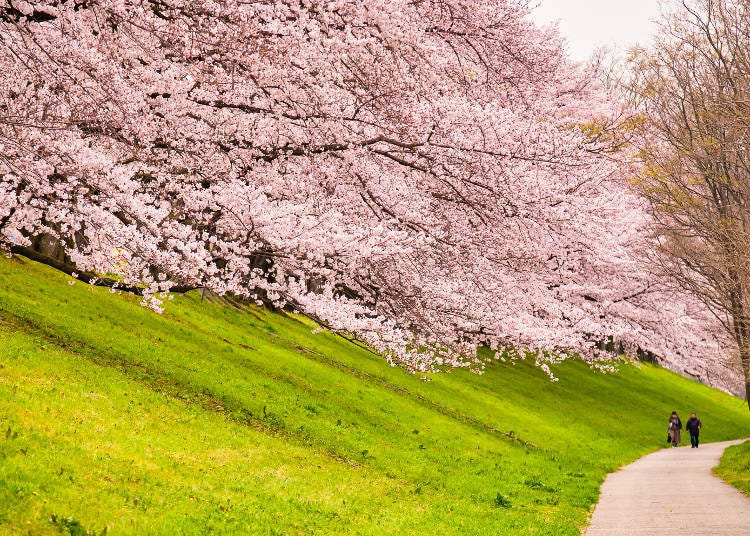
Peak viewing: Early April
Sewaritei Sakura Festival
・Venue: Yodogawa River Park Sewaritei Area
・Admission: Donation of 100 yen (free for children under 6)
・Festival Dates: March 23, 2024 to April 7, 2024
・Hours: 9 AM to 5 PM (Observation tower open until 4:30 PM, last admission at 4:20 PM)
・Admission: Free
・Inquiries: 075-633-5120 (Sakura Deaikan)
-
Yodogawa Kasen Koen Sewariteichiku淀川河川公園背割堤地区
- Address Yawatazaiouzizisaki, Yawata City, Kyoto 614-0000
-
Nearest Station
Access: 10-minute walk from Keihan Electric Railway Iwashimizu Hachimangu Station
- Phone Number 075-633-5120
Admission: Free
2. Ninnaji Temple: Late-blooming eye-level Omurozakura is a must-see
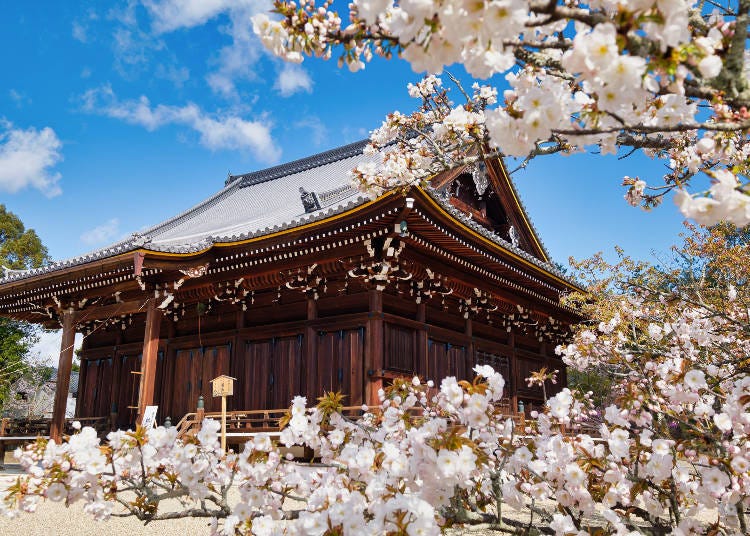
Kinugasa, Hanazono, and Omuro in northwestern Kyoto are home to many aristocratic villas established during the imperial capital days, as well as major temples like Kinkakuji and Ryoanji.
One of the temples, Ninnaji, is the head temple of the Buddhist Shingon sect's Omuro school. The complex is magnificent with the impressive Niomon (temple gate), the elegant palace, the main hall, and the five-storied pagoda.
About 200 cherry trees are planted against the backdrop of these buildings, with the weeping cherry tree in front of the bell tower and the Yoshino cherry tree near the main hall as the most iconic.
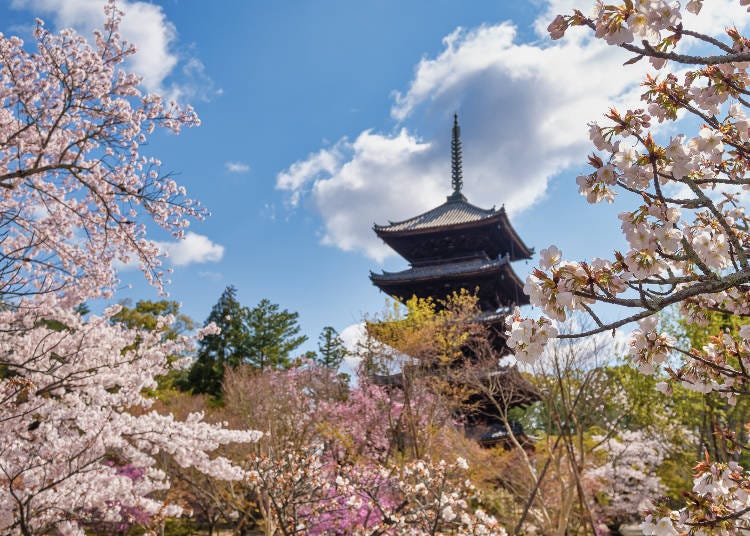
Special attention is paid to the late-blooming (early to mid-April) cherry blossoms called Omurozakura, with a grove located west of the central gate.
During the Kyoto cherry blossom viewing period in the Edo period (1603-1867), it was praised as being as wonderful as Nara's Mt. Yoshino. The trees only reach a height of 2 to 3 meters, creating a unique landscape and making it one of Kyoto's most famous cherry blossom spots.
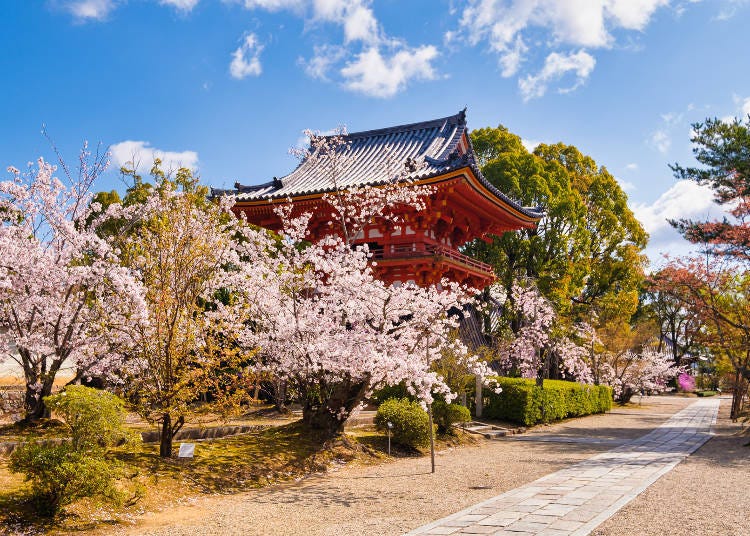
Peak viewing: Early to mid-April
Omuro Flower Festival
・Venue: Ninna-ji Temple precincts
・Festival Dates: March 23, 2024 to May 6, 2024; Ninna-ji Goten garden and Reihokan from 9 AM to 5 PM, Omuro Flower Festival from 8:30 AM to 5:30 PM (No light-up; ticket sales end 30 minutes before closing)
・Admission: Special admission fee of 500 yen; free for high school students and younger
・Inquiries: 075-461-1155 (Ninna-ji Temple Visitor Services)
-
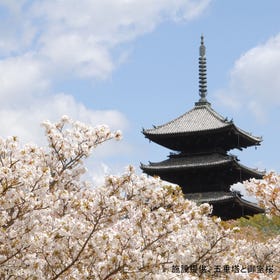
-
Address
33, Omuroouchi, Ukyo-ku, Kyoto-shi, Kyoto, 616-8092
View Map -
Nearest Station
Omuroninnaji Station (Keifuku Dentetsu-kitano Line)
3 minutes on foot
- Phone Number 075-461-1155
-
Address
33, Omuroouchi, Ukyo-ku, Kyoto-shi, Kyoto, 616-8092
3. Maruyama Park: Experience "Gion-no-Yozakura" - legendary Kyoto cherry blossoms!
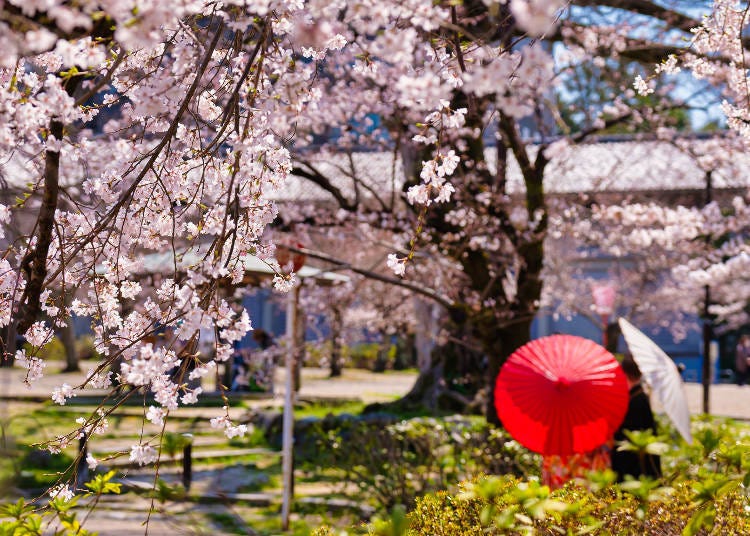
Gion, located in the southeastern part of the city, is home to the Yasaka Gion Festival, the largest festival in Kyoto. Yasaka Shrine can also be found in this gorgeous area, as is Kyoto's oldest park, Maruyama Park, which sits between Yasaka Shrine and the Jodo sect's Chion-in temple.
The park is Kyoto's largest cherry blossom viewing area, with 680 trees. At the time of flowering, the whole park is transformed into a fantastic sea of cherry blossoms.
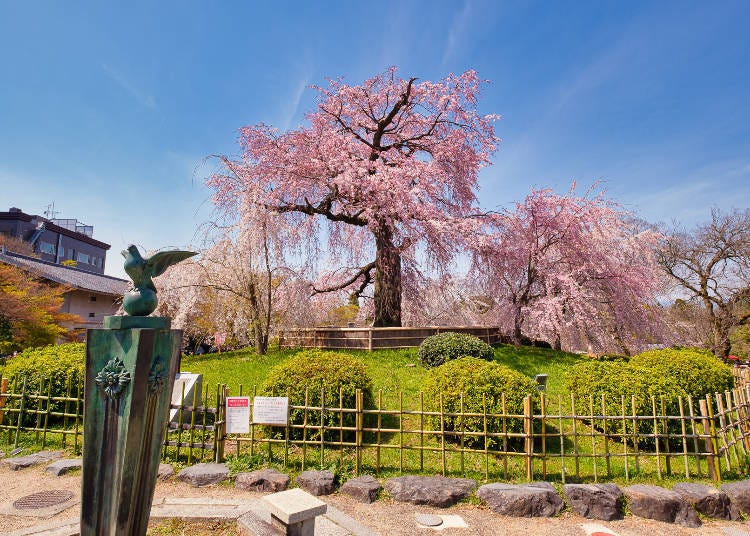
Standing in the park's center is a single white weeping cherry tree, known as "Hitoe Shiro Higan Shidarezakura." The site's original weeping cherry tree was a natural monument, but it withered and has been replaced by the current second-generation tree.
The giant tree with a trunk circumference of 2.8 meters, a height of 12 meters, and branches spreading out 10 meters was grown from a seed produced by the original tree. It's a popular Kyoto cherry blossom spot for visitors who come to gaze at the magnificent sakura tree.
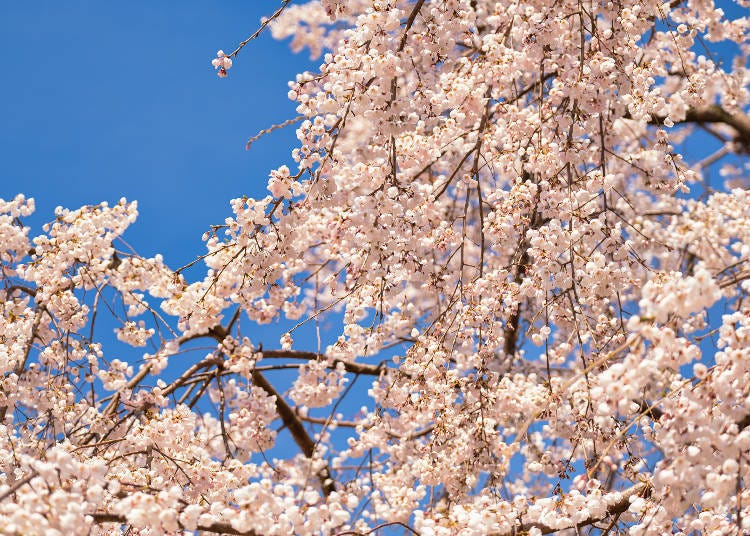
Peak viewing: Late March to early April
-
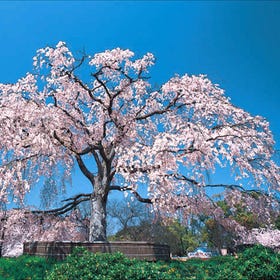
-
Address
473, Maruyamacho, Higashiyama-ku, Kyoto-shi, Kyoto others, 605-0071
View Map -
Nearest Station
Gionshijo Station (Keihan Line)
13 minutes on foot
- Phone Number 075-561-1350
-
Address
473, Maruyamacho, Higashiyama-ku, Kyoto-shi, Kyoto others, 605-0071
4. Daigoji Temple: Famous for its "Daigo of Flowers" blossoms
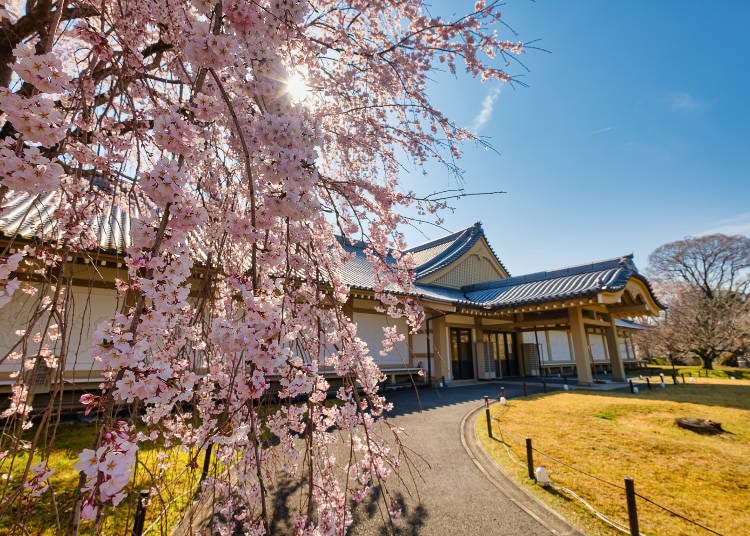
Vast Daigoji Temple, covering nearly seven square kilometers, is one of the best cherry blossom viewing spots in southern Kyoto and was the setting for Toyotomi Hideyoshi's "Daigo-no-Hanami" blossom party.
Here, various cherry blossoms bloom one after another over a period of about three weeks. A row of trees stretches from the main gate and a giant weeping cherry tree, which is said to be 180 years old, fills the sky near the Reihokan (museum), which houses national treasures and valued items of the temple.
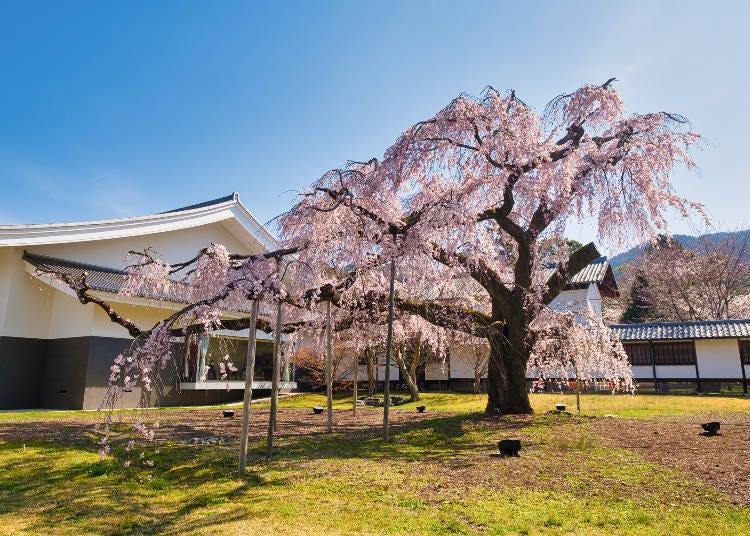
Near the five-storied pagoda in the temple complex – the oldest wooden building in Kyoto, completed in 951 – there are giant weeping cherry trees and Oyama cherry trees over 100 years old. The cherry blossoms decorate the precincts lined with historical buildings, creating an extremely beautiful sight.
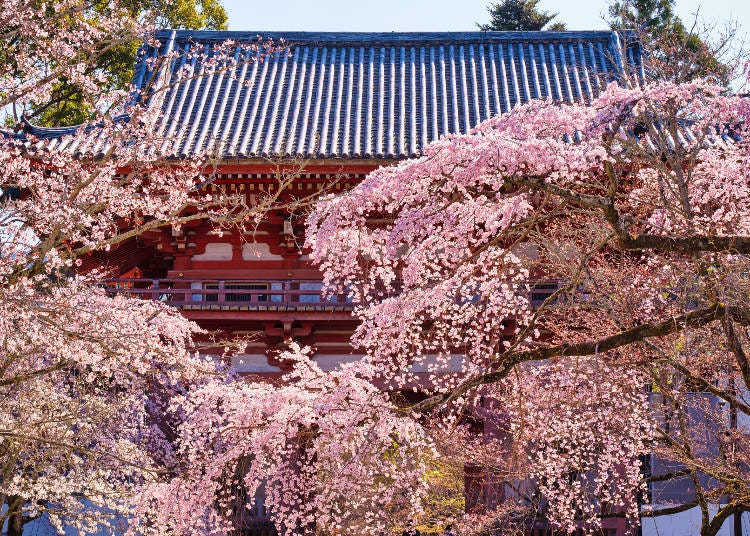
Peak viewing: Late March to early April
・Event: Ho-Taiko Hanami Gyoretsu (Toyotomi Hideyoshi's Cherry Blossom Viewing Parade)
・Venue: Daigo-ji Temple Precincts
・Date: Second Sunday of April every year, from 1-3 p.m.
-
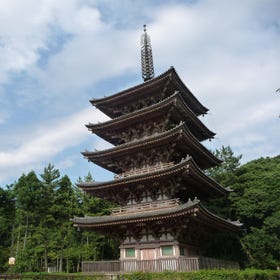
-
Address
22, Daigohigashiojicho, Fushimi-ku, Kyoto-shi, Kyoto, 601-1325
View Map -
Nearest Station
Daigo Station (Tozai Line)
10 minutes on foot
- Phone Number 075-571-0002
-
Address
22, Daigohigashiojicho, Fushimi-ku, Kyoto-shi, Kyoto, 601-1325
5. Arashiyama: Magnificent view of Kyoto cherry blossoms from Togetsukyo Bridge
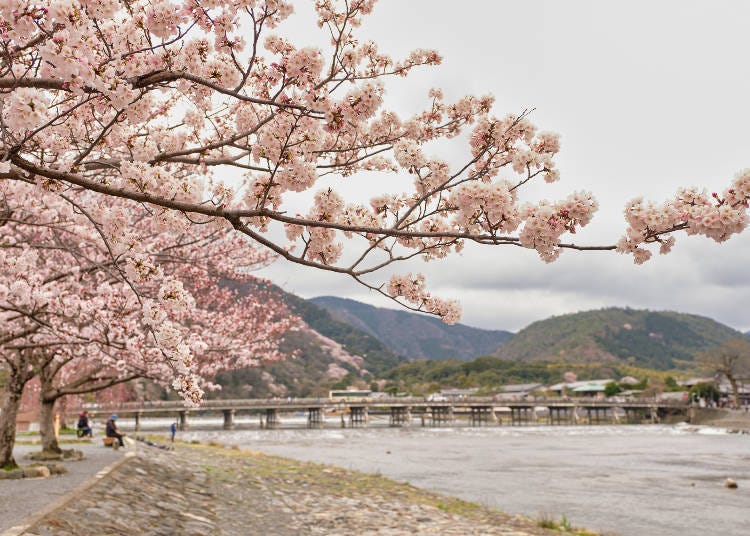
Arashiyama Gorge in western Kyoto city is a popular tourist area with many famous places. It is the setting for stories such as "The Tale of Genji" and "The Tale of the Heike."
The name "Arashiyama" is said to have originated from the "storm-like dance" of the spring cherry blossoms and autumn leaves. The sight of the Togetsukyo Bridge spanning the Oi River is representative of Arashiyama's scenery.
Formerly knowns as Kazuno River, it came to be called the "Oi River" when a large weir was constructed along its course. About 1,500 Yoshino cherry trees bloom around the Arashiyama area during cherry blossom season, with plentiful viewing spots.
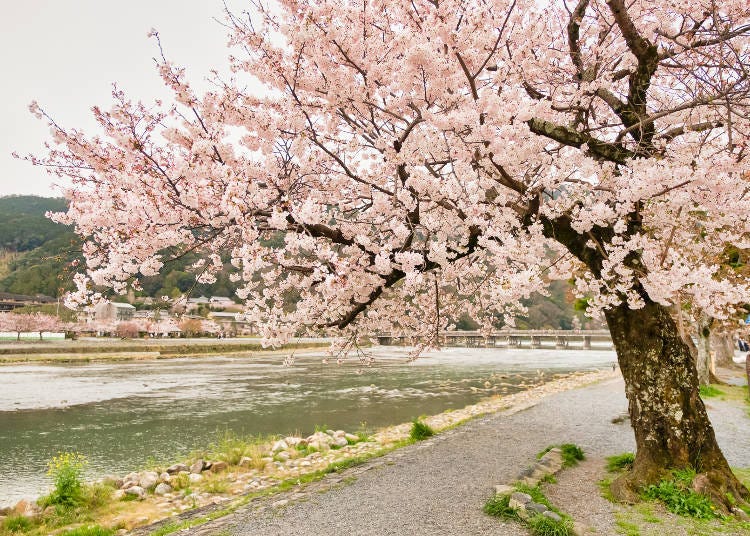
Of course, blossoms reflected on the surface of the water near Arashiyama Park and Togetsukyo Bridge are highlights. Still, there are many wild cherry trees near Osawa Pond and Hirosawa Pond in the north, offering a different atmosphere.
Okusaga, located northwest of Arashiyama, was once a place for sky burial, and Adashino Nenbutsuji Temple and its bamboo grove have a mysterious atmosphere. Although it really isn't, it's considered a "hidden" spot where about 60 cherry trees bloom.
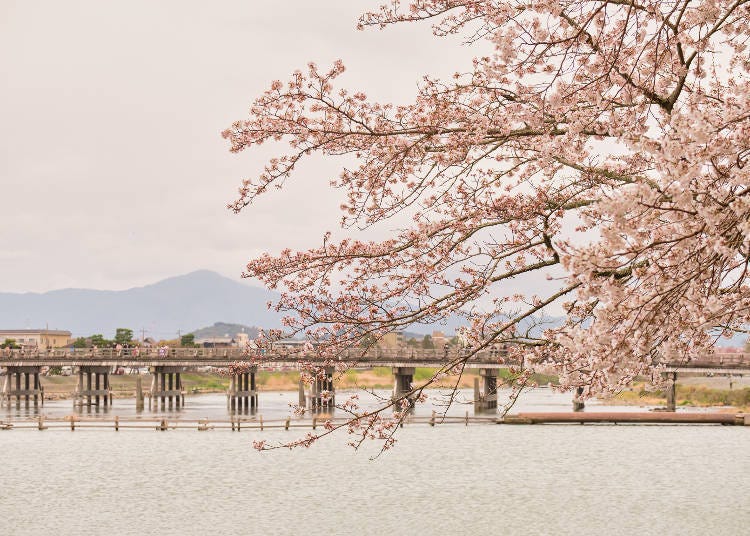
Peak viewing: Mid-March to late April
-
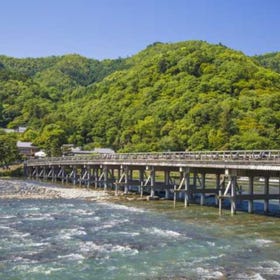
-
Address
Sagatenryuji Suenobaba Town, Ukyo Ward, Kyoto City, Kyoto Prefecture, 616-8385
View Map -
Nearest Station
Arashiyama Station (Keifuku Dentetsu-arashiyama Line)
3 minutes on foot
- Phone Number 075-411-9990
-
Address
Sagatenryuji Suenobaba Town, Ukyo Ward, Kyoto City, Kyoto Prefecture, 616-8385
6. Heian Jingu Shrine: Fascinating Yaebeni Shidarezakura
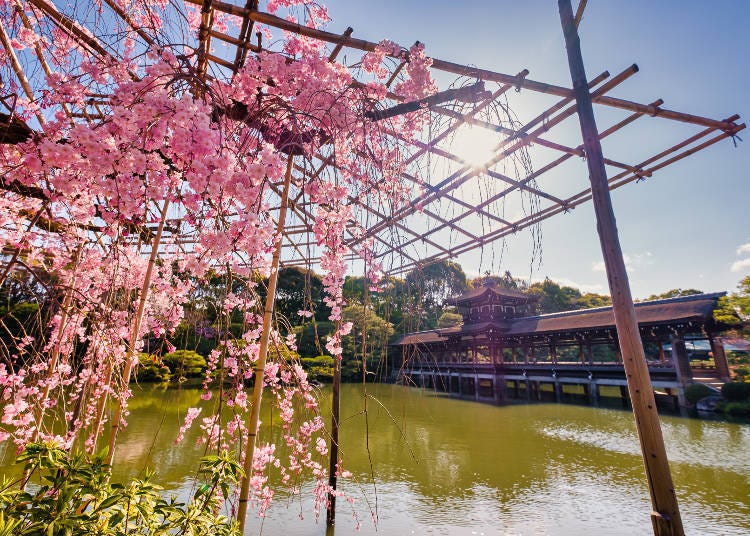
Heian Jingu Shrine was built in 1895 in an area loved by influential cultural and literary figures, neighboring Jishoji/Ginkakuji, Kyoto University, and the National Museum of Modern Art, Kyoto.
The striking red shrine is a unique place where you can experience the thousand years of Heiankyo (The name of ancient Kyoto, meaning "tranquility and peace" and traditionally characterizing the era).
The shrine's garden is scenic and features a graceful pond, perfect for a garden stroll where Yae-beni Shidarezakura, which appear in the novel "Sasameyuki" by literary master Junichiro Tanizaki, bloom.
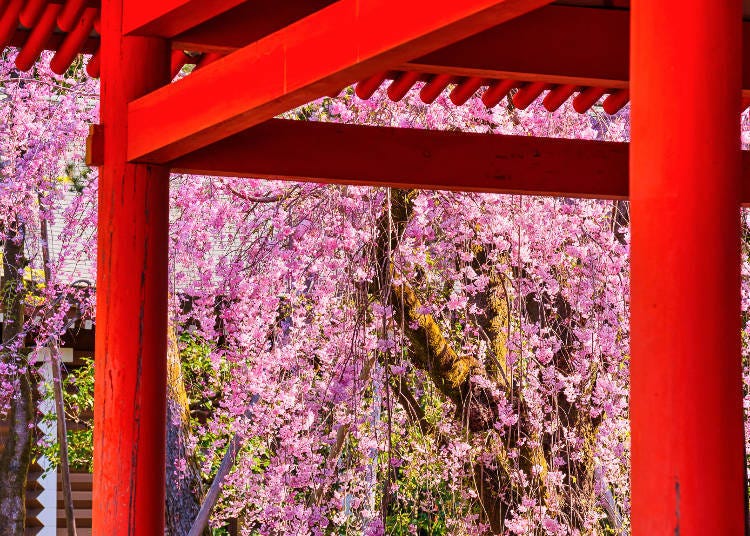
In the garden, 300 cherry trees, including varieties such as Yae-beni Shidarezakura, Beni Shidarezakura, Somei Yoshino, Satozakura, Yamazakura, and Ukonzakura, grow. Along with the Yae-beni Shidarezakura, another must-see is the lone Yamazakura near the main hall (Daigokuden), called "Sakon no Sakura."
The tree's age is unknown, but it is a majestic, solitary tree that overwhelms the view. There are tea ceremonies and concerts during the Kyoto cherry blossom season, and visitors can also enjoy blossom viewing at night.
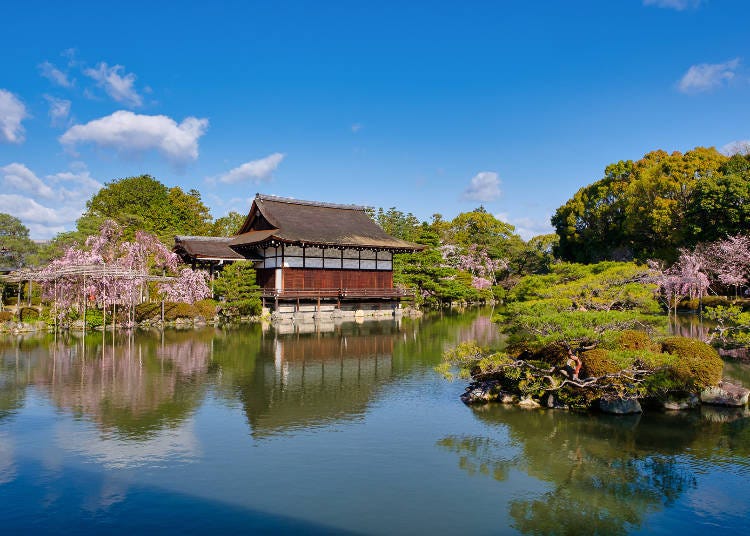
Peak viewing: Early to mid-April
Heian Shrine Red Weeping Cherry Concert
・Venue: East Garden & VIP Hall (Shoubikan)
・Dates: April 3, 2024 to April 7, 2024, 6:15 PM to 9 PM (last entry by 8:30 PM)
・Lighting: Illumination during the event
・Tickets: Advance 3,000 yen, same-day 2,500 yen
・Inquiries: 075-255-9757 (Heian Shrine "Sakura Otoyo" Office)
Cherry Blossom Tea Ceremony
・Venue: Tea Room "Choushinte"
・Dates: Late March to mid-April
・Admission: 1,000 yen, plus separate admission to the shrine's garden (600 yen)
・Inquiries: 075-761-0221 (Heian Shrine)
-
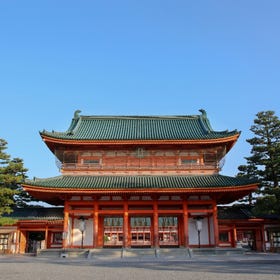
-
Address
97, Okazakinishitennoucho, Sakyo-ku, Kyoto-shi, Kyoto, 606-8341
View Map -
Nearest Station
Higashiyama Station (Tozai Line)
10 minutes on foot
- Phone Number 075-761-0221
-
Address
97, Okazakinishitennoucho, Sakyo-ku, Kyoto-shi, Kyoto, 606-8341
7. Kiyomizu Temple: See the sea of cherry blossom "clouds" from Kiyomizu Stage
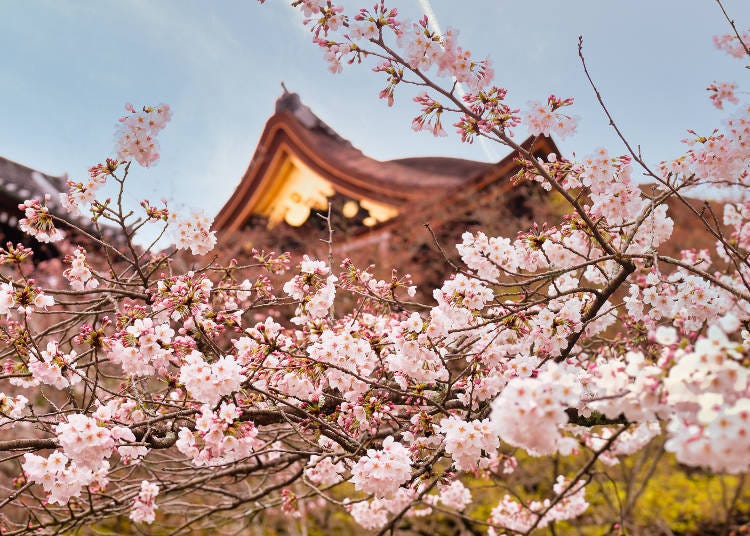
Kiyomizu-dera, known for its Kiyomizu Stage, is another of Kyoto's popular cherry blossom viewing venues. The stage provides an overlook of the city, and is a major tourist draw in all seasons.
Over the course of its long history, the temple has burned down multiple times, but was rebuilt each time. The large temple complex, representative of Kyoto, includes 30 temples across 13 hectares.
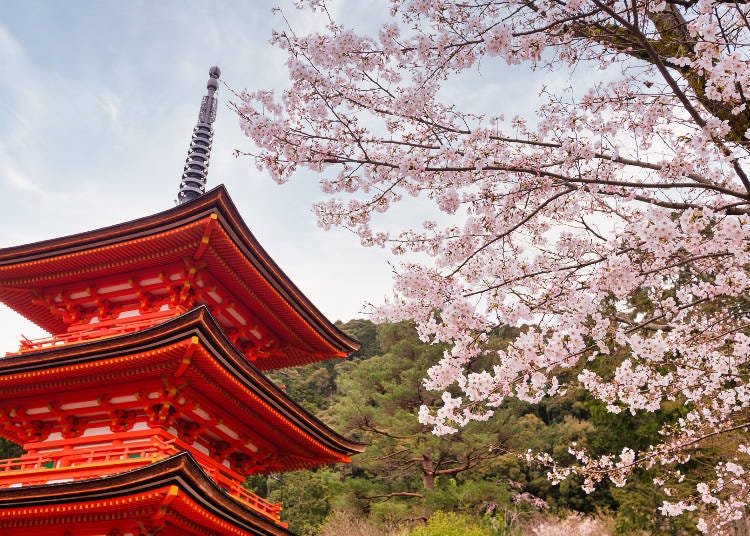
Both the view from Kiyomizu Stage and the view of the Stage from Oku-no-in are superb. About 1,500 Yamazakura and Somei Yoshino cherry trees grow below the stage, creating a cloud-like sea of cherry blossoms. When illuminated for special night visitation, the atmosphere is fantastic.
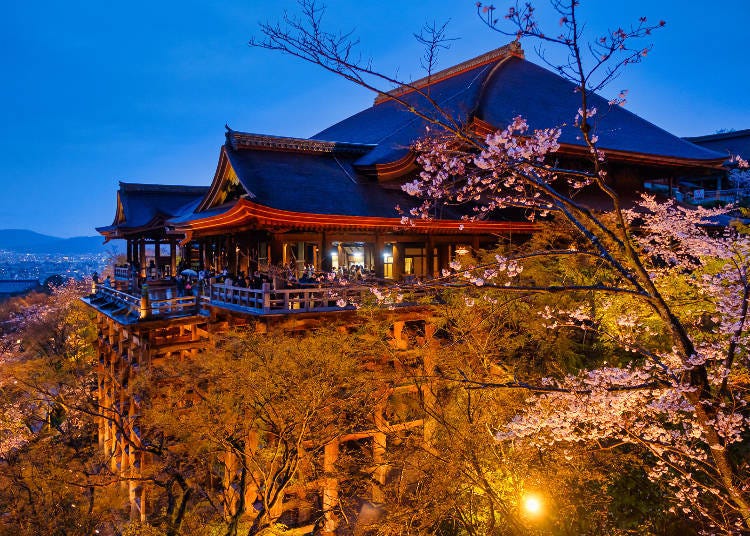
Peak viewing: Early-mid April
-
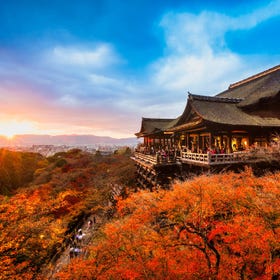
-
Address
1-294 Kiyomizu, Higashiyama-ku, Kyoto City, Kyoto Prefecture, 605-0862
View Map -
Nearest Station
Gionshijo Station (Keihan Line)
25 minutes on foot
- Phone Number 075-551-1234
-
Address
1-294 Kiyomizu, Higashiyama-ku, Kyoto City, Kyoto Prefecture, 605-0862
8. Kyoto Botanical Gardens: A special place where you can see 180 kinds of cherry blossoms
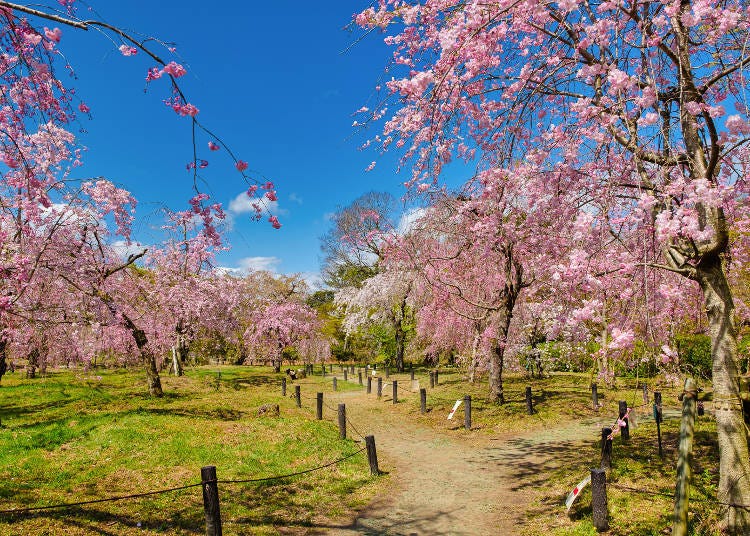
Kyoto Botanical Gardens was the first public botanical garden established in Japan, in 1924. It is a popular tourist destination where more than 12,000 kinds of plants grow.
There are many attractions, including a native forest that's full of local plants and flowers in all seasons and beautiful irises, but the cherry blossoms are especially fulfilling. With about 500 cherry trees from 180 varieties, it's almost like a living cherry blossom museum.
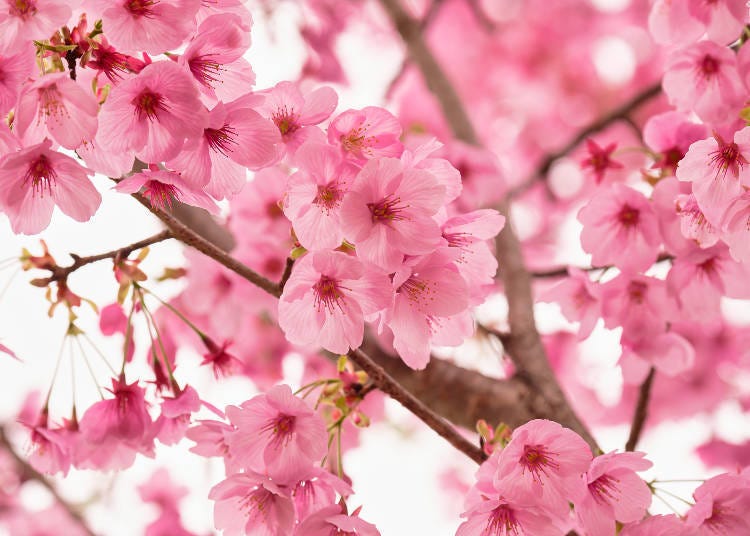
From Kanhi-zakura in early March to Somei Yoshino and Yae-beni Shidarezakura in early April, and Kikuzakura in late April, various cherry blossoms continue to bloom against the backdrop of Mt. Hiei for over a month. The Kyoto Botanical Gardens are a great place to learn about the variety of cherry blossoms and deepen your understanding of cherry blossom culture.
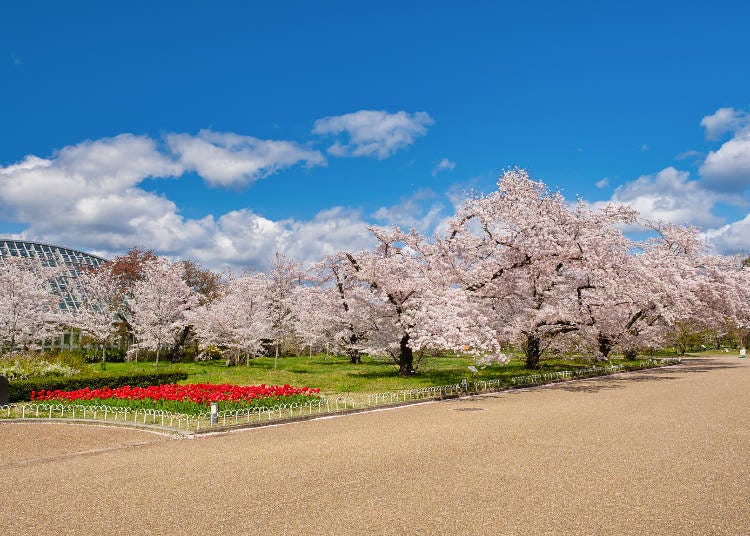
Peak viewing: Early March to late April
-
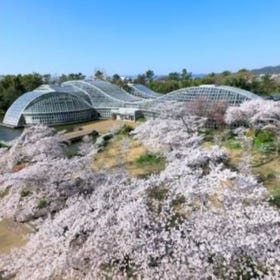
-
Address
Shimogamo Hangi Town, Sakyo Ward, Kyoto City, Kyoto Prefecture, 606-0823
View Map -
Nearest Station
Kitayama Station (Karasuma Line)
- Phone Number 075-701-0141
-
Address
Shimogamo Hangi Town, Sakyo Ward, Kyoto City, Kyoto Prefecture, 606-0823
9. Keage Incline: Look at the blossoms as you walk the rails
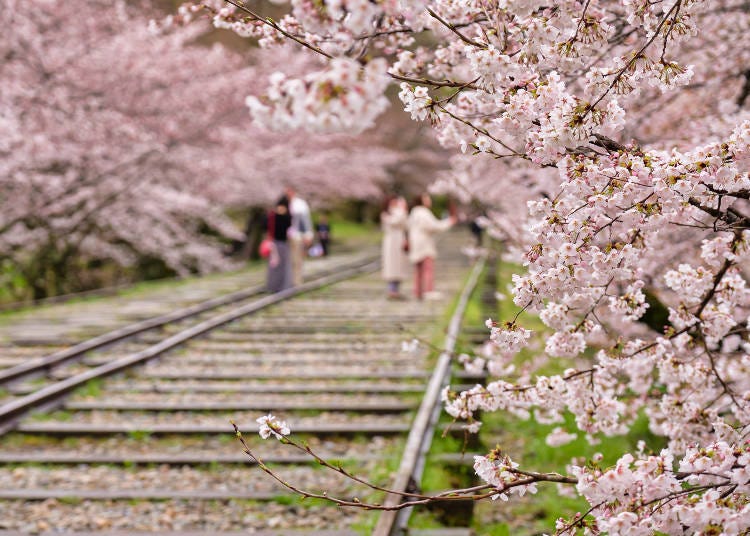
On the eastern side of Kyoto, an aqueduct was built to carry cargo from Lake Biwa to Kyoto and was used until 1948. Upon arrival in Kyoto's Keage area, boats were transferred to rails by means of a trolley system to complete their transit to the Nanzenji Temple Dock.
The incline and aqueduct have been preserved as industrial heritage sites, and in recent years have become tourist attractions.
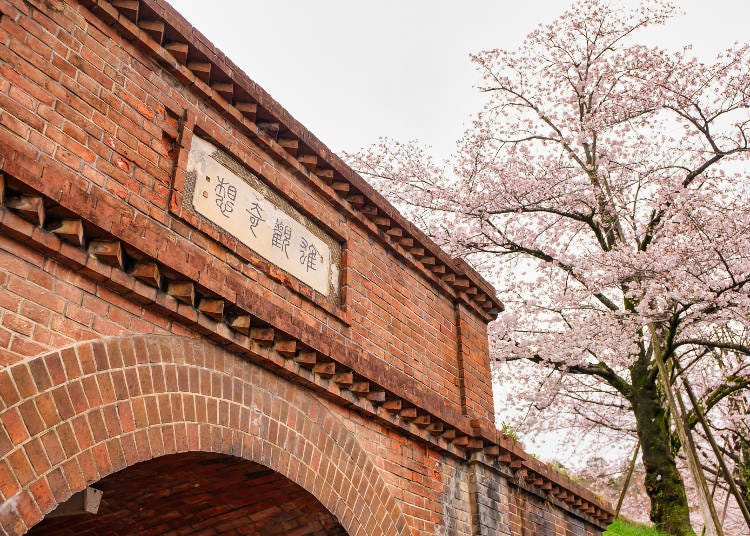
Keage Incline is located near Nanzenji Temple and is the world's longest sloping railway with a total length of 582 meters. About 90 Yoshino and Yamazakura cherry trees flank the incline, making it perfect for cherry blossom photos as you traverse the rails.
Flowering season is in early April and a fountain near the former boat entrance serves as a memorial to the past liveliness of boat transportation amidst the unique scenery of modern ruins.
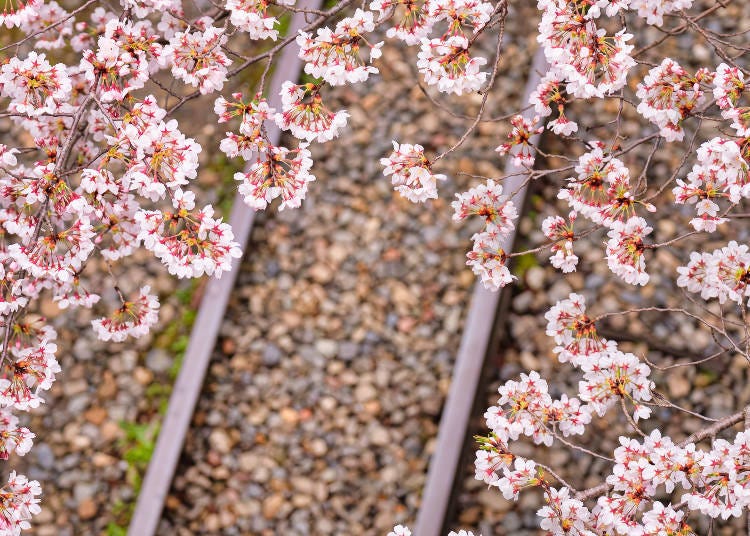
Peak viewing: Late March to early April
-
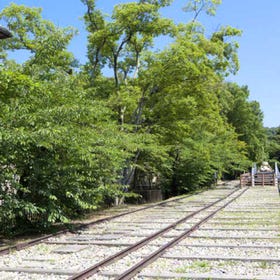
-
Address
Nanzenjifukuchicho, Sakyo-ku, Kyoto-shi, Kyoto, 606-8435
View Map -
Nearest Station
Keage Station (Tozai Line)
9 minutes on foot
-
Address
Nanzenjifukuchicho, Sakyo-ku, Kyoto-shi, Kyoto, 606-8435
10. The Philosopher's Path: Walking path along a canal with about 400 cherry blossom trees
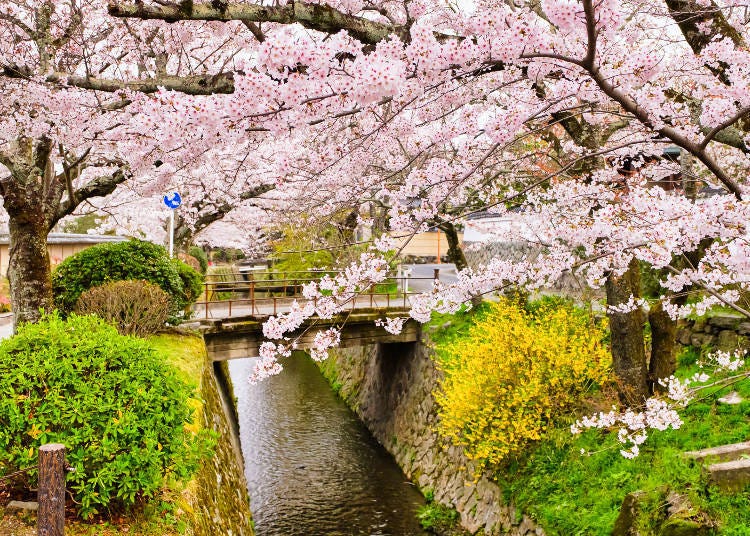
The Philosopher's Path runs for about 2 kilometers along a canal flowing from Nyakuoji Bridge, just outside Kumano Nyakuoji Shrine to Ginkakuji intersection.
The path was made in 1890 along with the 3.3-kilometer canal, which is connected to the Keage Incline and is part of the Biwa Canal system. Philosophers who lived in the area would walk along the path, granting it its name.

Japanese painter Hashimoto Kansetsu donated 300 Yoshino cherry trees for planting along the canal, which then grew to about 400 trees (Somei Yoshino, Oshimazakura, Yaezakura, weeping cherry blossoms, etc.) commonly known as the "Kansetsu Sakura."
You can enjoy the fresh beauty of Japanese spring as you take in the view of a series of small stone bridges and cherry blossoms that overhang the canal, as well as other flowers in bloom such as camellia, forsythia, Thunberg spiraea, and Japanese kerria.

Peak viewing: Late March to early April
-
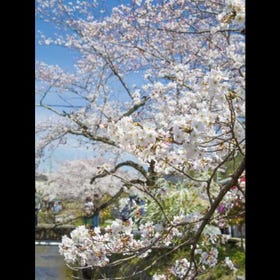
-
Address
Kyoto Prefecture Kyoto City Sakyo Ward Jodo Temple Ishibashi Town-Wakaoji Town, 606-8406
View Map -
Nearest Station
Kyoto Station (JR Tokaido Line / JR Biwako Line / JR Tokaido Shinkansen / JR Kyoto Line / JR Sagano Line / JR San-in Line / JR Nara Line / Karasuma Line / Kintetsu-kyoto Line)
40 minutes by bus
- Phone Number 075-761-3863
-
Address
Kyoto Prefecture Kyoto City Sakyo Ward Jodo Temple Ishibashi Town-Wakaoji Town, 606-8406
Kyoto itself an excellent tourist destination with plenty of sights to appreciate, but if you visit during peak cherry blossom season, you'll be able to experience the full charm of the ancient city arrayed in vibrant cherry blossoms. Come visit!
Written by: Click
Translation by Gabriel Wilkinson.
*This article was produced in March 2020 and updated in February 2024. The cherry blossom season, event schedules, and details are subject to change.
- Area
- Category
*Prices and options mentioned are subject to change.
*Unless stated otherwise, all prices include tax.
Limited time offer: 10% discount coupons available now!
Recommended places for you
-
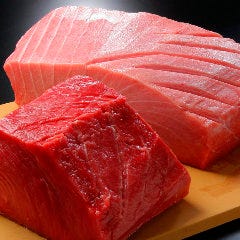
Kamesushi Sohonten
Sushi
Umeda, Osaka Station, Kitashinchi
-

Jukuseiniku-to Namamottsuarera Nikubaru Italian Nikutaria Sannomiya
Izakaya
Kobe, Sannomiya, Kitano
-
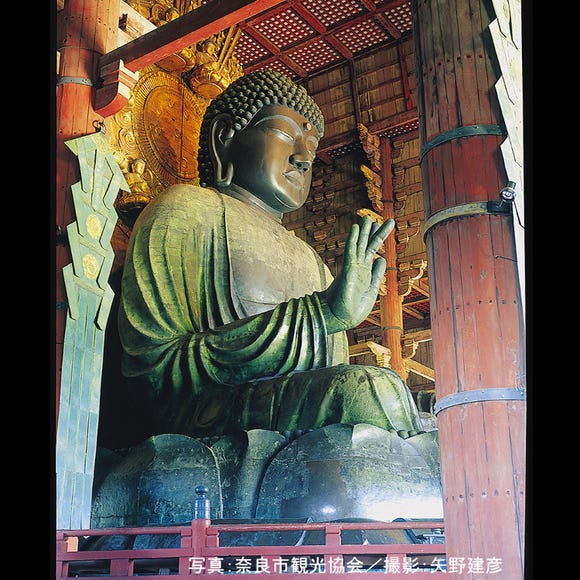
Todai-ji Temple
Temples
Nara, Ikoma, Tenri
-
Goods

Yoshida Gennojo-Roho Kyoto Buddhist Altars
Gift Shops
Nijo Castle, Kyoto Imperial Palace
-
Menu
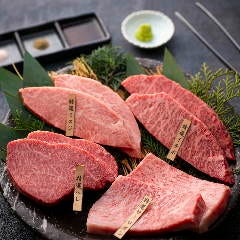
ISHIDAYA Hanare
Yakiniku
Kobe, Sannomiya, Kitano
-
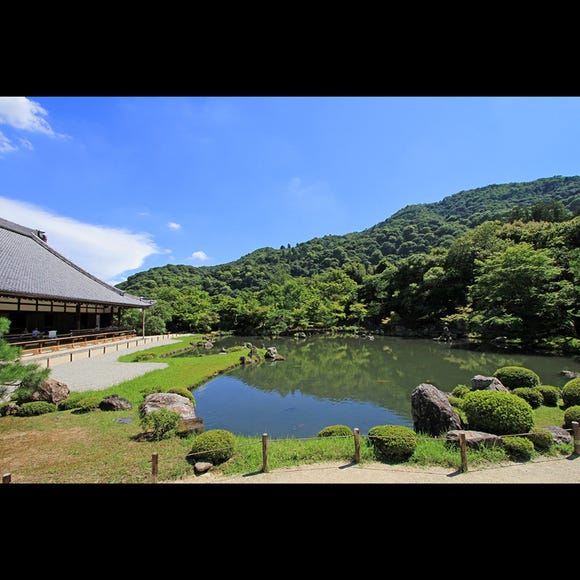
Tenryu-ji Temple
Temples
Arashiyama, Uzumasa
-
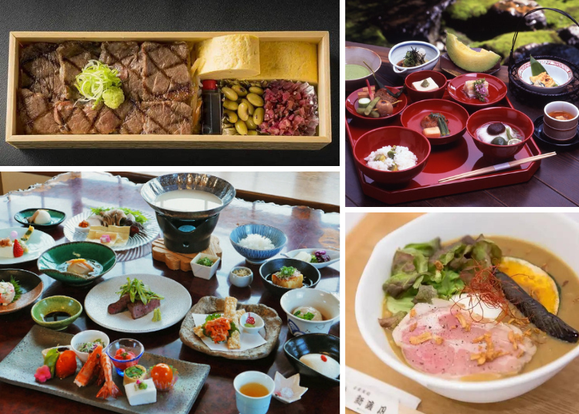
18 Must-Try Restaurants in Arashiyama: Savor Everything from Classic Cuisine to Trendy Cafés with Scenic Backdrops
-
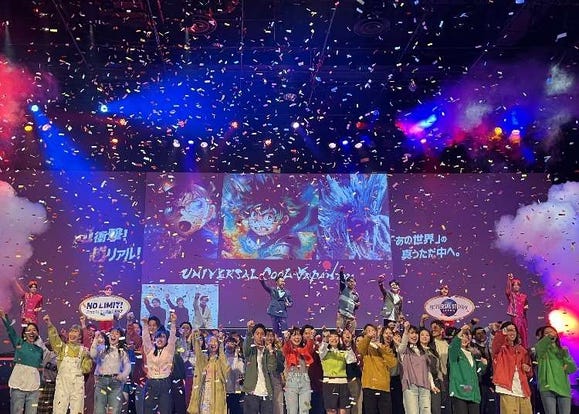
Make the Most of 'Universal Cool Japan' (2024 Guide) - Detective Conan, Monster Hunter & More
-
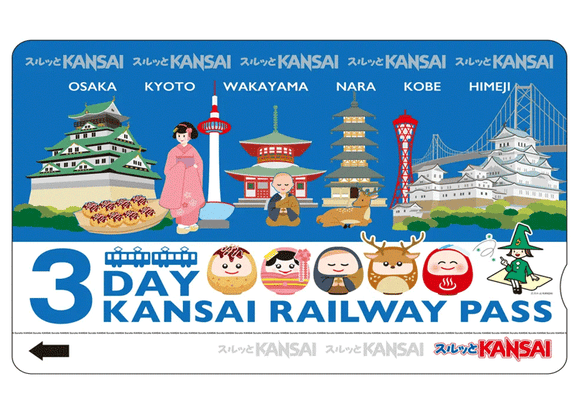
Everything You Need to Know About the Kansai Railway Pass
-
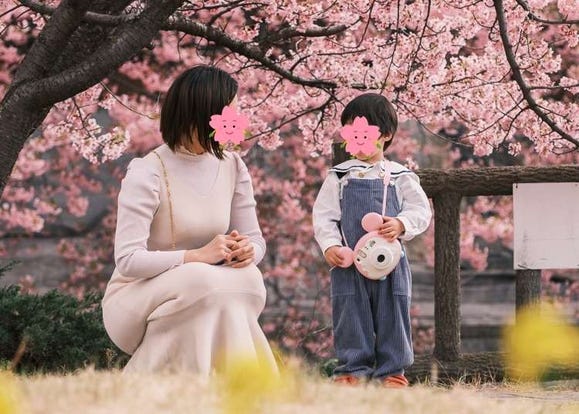
Taking Mom and Dad on a Trip to Osaka: How to Have Fun, Tips, Must-See Spots, and a 5-Day Itinerary
-
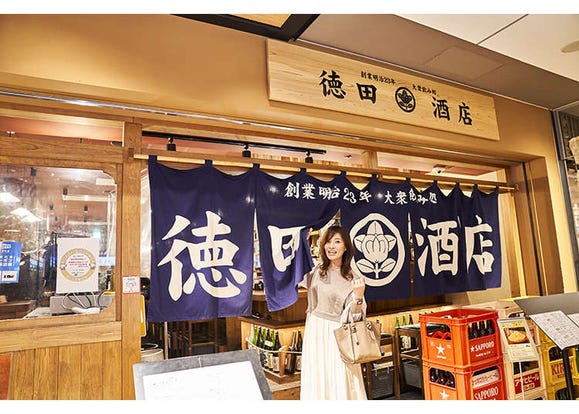
Enjoy the Enchanting World of Osaka Station City: Solo-Friendly Bar-Hopping!
-

What Items Does a Japanese Stationery Lover Want Most? We Find Out with Taku Kidate!
-
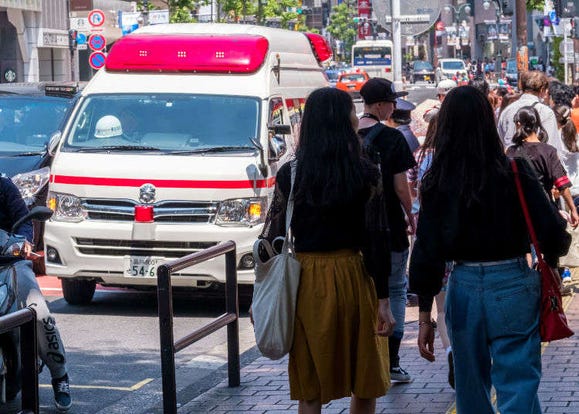
Healthcare in Japan for Tourists: What to Do When You Get Sick or Injured in Japan
-
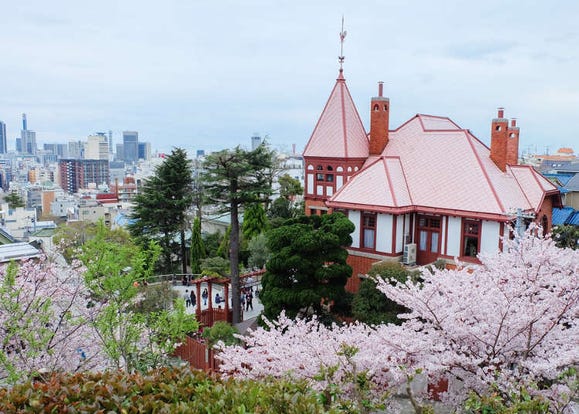
Visiting Kobe in Spring: Ultimate Guide to Kobe Weather in Spring and Clothes You Need
-
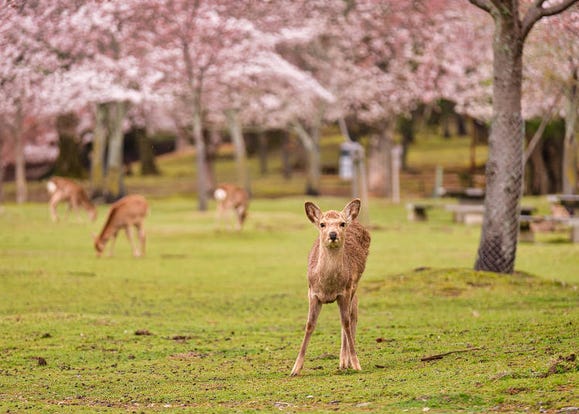
2024 Nara Cherry Blossom Guide: 10 Spots for Sakura Viewing and Festival Dates
-
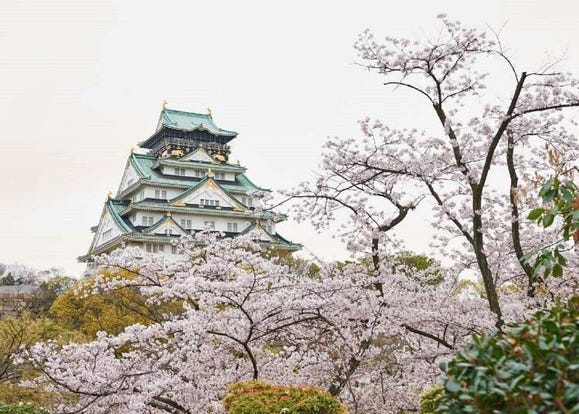
Kansai Cherry Blossoms Guide: Best 8 Places To See Sakura in Osaka, Kyoto and Nara (2024)
-
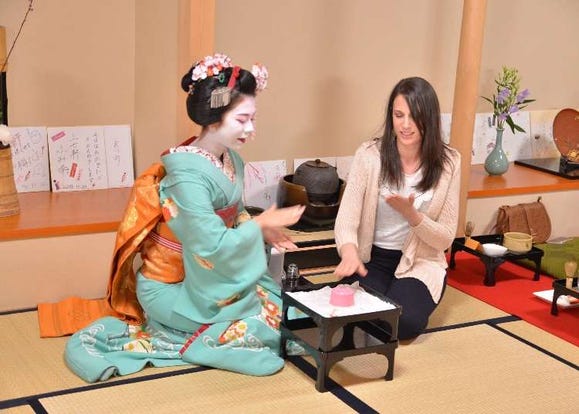
Sightseeing Highlights: Experience the Appeal of Kyoto Geisha Culture
-
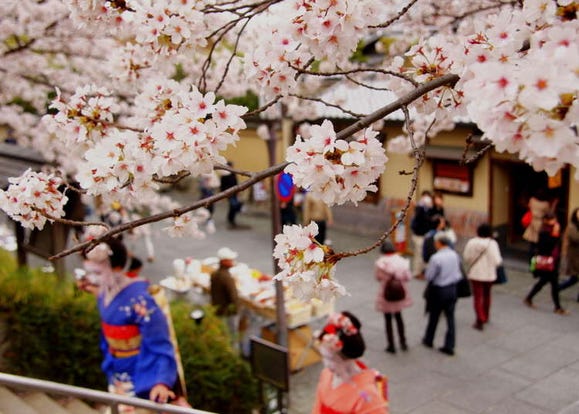
Looking to Visit Kyoto in Spring 2024? Here's Your Ultimate Guide to Kyoto Weather and Packing Essentials
- #best gourmet Osaka
- #things to do Osaka
- #what to do in kyoto
- #what to bring to japan
- #best gourmet Kyoto
- #new years in Osaka
- #what to buy in nanba
- #Visiting Osaka
- #onsen tattoo friendly arima
- #daiso
- #Visiting Kyoto
- #best japanese soft drinks
- #japanese fashion culture
- #japanese convenience store snacks
- #japanese nail trends


















